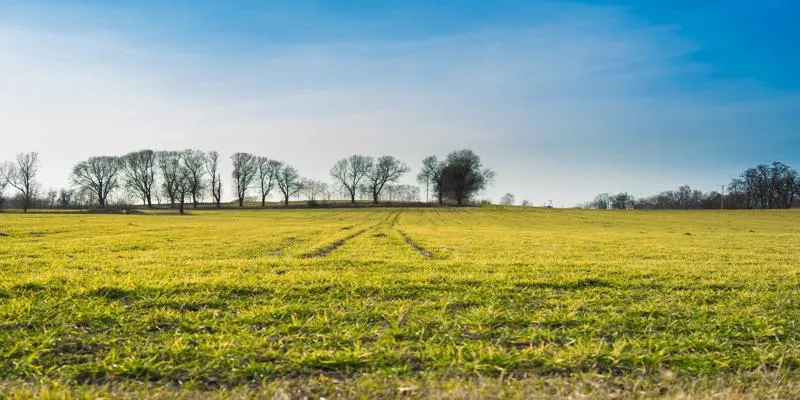How to Buy Vacant Land: A Complete Guide for First-Time Buyers
Buying vacant land is an exciting prospect for many, whether you’re looking to build your dream home, start an investment portfolio, or simply have a place to retreat. However, while the process might seem straightforward, it requires careful planning, research, and due diligence.

There are many factors to consider, and even small oversights can lead to costly mistakes. Understanding how to buy vacant land and knowing what to look for will help you make the right choice for your needs and budget.
Planning to Buy Vacant Land? Here’s How to Make the Right Choice
In this guide, we’ll break down the essential steps in the land-buying process, from selecting the right property to completing the transaction smoothly.
Understanding Your Purpose for Buying Land
Before you start to buy vacant land, you need to define your reason for buying. Do you want to build your home, create a farm, or use it for recreational purposes? By knowing your intended use, you can determine what type of land will best suit your needs. For example, if you’re buying land to build a home, prioritize land that’s zoned for residential use, close to highways, utilities, and schools.

Conversely, if you’re buying land to farm, ensure the land has the right kind of soil, climate, and available water sources. Knowing your goals will guide your research and make it easier to narrow down your options.
Location and Accessibility
One of the most important factors when buying vacant land is location. A low price is tempting, but land in a remote or inaccessible area might not be a wise investment. Accessibility is crucial, especially if you’re planning to build or frequently access the land. Ensure the land has legal access, either through public roads or legally implied easements.
Consider proximity to essential services: how close is the nearest grocery store or school? A piece of land may be beautiful, but if it’s too far from key amenities, it might be difficult to sell later or inconvenient to use in the long run.
Researching Land Characteristics
Once you’ve identified the location and purpose of the land, it’s time to delve deeper into its specific characteristics. Start by reviewing the land’s topography. Is the land flat, hilly, or mountainous? The slope can affect how easy or expensive it will be to build on or use the property for certain purposes. If the land is uneven or prone to flooding, it may require additional grading or drainage solutions, which can significantly increase development costs.
Soil quality is equally important, especially if you’re planning on farming or gardening. Some soil types are better for agriculture than others, so check the soil’s composition and fertility before proceeding. Request a soil test to determine its pH, nutrient content, and drainage capabilities. If you’re buying land to build a home, ensure the soil can support the weight of a structure and doesn’t require special foundations.
Understanding Land Financing Options
Financing vacant land can be more complex than buying an existing home. Traditional mortgages aren’t always available for land purchases, so you might need to explore alternative financing options. Many buyers consider land loans, which can be more challenging to secure depending on the land’s location, size, and purpose.
Land loans often have less favorable terms than home loans, with higher interest rates and larger down payments required. In some cases, sellers may offer owner financing, allowing you to pay the seller in installments directly without involving a bank. This can be a good option for buyers with less-than- perfect credit, but ensure the terms are clear and favorable.
Conducting Due Diligence and Legal Checks
Before finalizing the purchase, conducting thorough due diligence to ensure the land is free of legal issues is crucial. Start by verifying the land’s title. Ensure the person selling the property has legal ownership and the right to sell it. You can do this by checking with the local land registry or a title company. A clean title ensures that no other parties can make a claim on the land after you purchase it.

In addition to the title, review any easements or encroachments on the property. An easement allows others to use a portion of the land for specific purposes, such as a utility company accessing power lines. While easements are common, be aware of any that could affect your ability to use or develop the land. Similarly, check for encroachments, which occur when a neighbor’s structure or fence extends onto your property. These issues could complicate your plans for the land.
Closing the Deal and Finalizing the Purchase
Once you’ve completed all the necessary checks and you’re confident in your decision to buy vacant land, it’s time to close the deal. The closing process for land transactions is typically similar to that of a home purchase but can vary based on the location and type of transaction.
You’ll need to sign a sales agreement outlining the terms of the sale, including the purchase price, closing date, and any contingencies. If you’re financing the land, the lender will also be involved in the closing process.
Conclusion
Buying vacant land is a unique and exciting opportunity that requires careful consideration and planning. By understanding your goals, researching the land’s characteristics, evaluating its accessibility, and conducting thorough legal checks, you can make an informed decision that suits your needs. The process may be more complicated than buying an existing home, but with proper due diligence and preparation, you’ll be ready to make a successful purchase.











